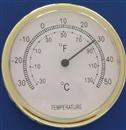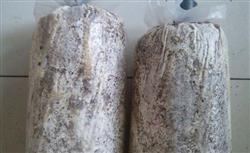Cultivation of Pleurotus ostreatus: what causes the low yield of Pleurotus ostreatus?

What causes the low yield of Pleurotus ostreatus? Is there any way to increase the yield of tea mushroom? Also asked experienced netizens to help introduce the main factors affecting the high and stable yield of Pleurotus ostreatus, reference as follows: 1. Strain degradation: the breeding work of Pleurotus ostreatus is relatively lagging behind, the source of the strain is single, and there is obvious degradation. 2. The formula is unreasonable: the formula of culture material in the production of Pleurotus ostreatus is random, especially the proportion of nitrogen nutrition is not in place, which seriously affects the yield of Pleurotus ostreatus. 3. The bag-making rate is low: tea mushroom bag-making in autumn is under the condition of high temperature, and the bag-making rate is only 70%-80%, and the poor one is even less than 50%. 4. Disease and pest harm: tea tree mushroom grows for a long time and is easily harmed by mites, mushroom flies, mushroom mosquitoes and other pests. Corresponding measures should be taken to increase the yield of Pleurotus ostreatus. Methods to improve the yield of Pleurotus ostreatus: first, select excellent strains: at present, there are two main sources of excellent strains of Pleurotus ostreatus planted by landlords in our country. one is the Institute of Fungi in Sanming City, Fujian Province, which has thick stalks, few fruiting bodies and dark color. the cover is brown, the fruiting body has strong high temperature resistance and high yield, but the taste of fresh mushroom is slightly poor. The second is Guangchang, Jiangxi, where the stalk is fine, the number of fruiting bodies is large, the color is slightly light, the cap is reddish brown, the yield is slightly lower, but the meat is tender and the taste of fresh mushrooms is good. It is suggested that mushroom farmers introduce mother species directly from regular units to propagate. Method 2. Use the scientific formula to configure the cultivation material: the nitrogen content of the culture material of Pleurotus ostreatus is too high, the pollution rate is high, the mushroom is late, and the nitrogen content is too low, the yield is low. The following two formulations are recommended: sawdust 36%, cottonseed hull 36%, wheat bran 20%, corn meal 5%, tea seed cake 1%, light calcium carbonate 1%, sugar 1%, pH 7: 7.5; or cottonseed hull 87%, wheat bran 10%, lime 2%, sugar 1%, water content 56% 60%, pH 7: 7.5. Method 3. To improve the finished product rate of Pleurotus ostreatus bag: 1. The original culture material is selected: the culture material should be fresh and mildew-free, and the sawdust should be ripened and screened. The water content of the culture material should be suitable, with water stains on the fingers but not dripping. 2, tea mushroom bag production: cottonseed shell, sawdust should be pre-wet 24 hours in advance and add lime accumulation fermentation, then add wheat bran, mix and bag to the upper stove for no more than 5 hours. 3. Disinfection and sterilization: put the material bag into the atmospheric stove, generally 2500-3000 bags per stove, not too much. "attack, control and protect the tail" during sterilization, shorten the time of heating to 100 ℃ as much as possible, maintain 16-18 hours after the temperature reaches 100 ℃, and achieve complete sterilization. 4. The culture of Pleurotus ostreatus: Pleurotus ostreatus is sensitive to light and temperature. The culture should be carried out under the condition of relatively constant temperature and avoiding light, the temperature should be controlled at 22 ~ 26 ℃, and the culture room should be checked every 10 days to remove the contaminated bacteria. Fifth, bacterial bag vaccination. After sterilization, the material temperature is cooled to less than 30 ℃ and put into the inoculation box for inoculation. Try to reduce the damage of bacterial bags. Method 4. Scientifically arrange the bag-making season: the mycelium of Pleurotus ostreatus can grow at 5: 35 ℃, the optimum temperature for fruiting body differentiation is 22: 26 ℃, lower than 20 ℃, the fruiting body grows slowly, the tide turns slowly, the stipe is short, the yield is low, and the fruiting body grows fast and opens easily above 28 ℃, which affects the quality. Gaochun County is the most suitable for the formation and growth of the fruiting body of Pleurotus ostreatus in mid-late May and mid-September. It is a reasonable bag-making period to push forward 55 days and 60 days, and it is generally arranged to make bags in the first and middle of March and the first and middle of July. Method 5. Do a good job of integrated pest control: physical control and biological control are often used, and chemical control is not used as far as possible during mushroom emergence. Focus on environmental hygiene, timely disposal of waste bacteria bags, and disinfection inside and outside the mushroom room, using clean tap water to replenish water. The insect control method was combined with anti-insect net, black light and water immersion method (pouring water into the mushroom tube before the mushroom primordium appeared or after harvest, the water surface was 1mm higher than the material surface, and then dumped after 2 days). Click to get more tea mushroom planting technology click to get more edible mushroom planting technology
- Prev

What should we pay attention to when planting Agaricus blazei Murrill?
What should we pay attention to when planting Agaricus blazei Murrill? Ask netizens to help introduce that if the method of planting Agaricus blazei Murrill is not in place, it will affect the firmness and abnormal mushroom emergence of Agaricus blazei Murrill. First, the main factors that will affect the fruiting of Agaricus blazei Murrill: 1, mushroom temperature.
- Next

Pleurotus ostreatus cultivation: how to manage the mushroom emergence period?
How to manage the mushroom emergence period of tea tree mushroom? You can also refer to the following methods to manage the mushroom emergence period under the guidance of friends: when the bacteria bag is full of mycelium, after about 10 days, when the accumulated temperature is between 1600 and 2000 ℃, move it into the opening of the pre-sterilized factory building. 0.5% potassium permanganate is used in the bacterial bag before opening.
Related
- Fuxing push coffee new agricultural production and marketing class: lack of small-scale processing plants
- Jujube rice field leisure farm deep ploughing Yilan for five years to create a space for organic food and play
- Nongyu Farm-A trial of organic papaya for brave women with advanced technology
- Four points for attention in the prevention and control of diseases and insect pests of edible fungi
- How to add nutrient solution to Edible Fungi
- Is there any good way to control edible fungus mites?
- Open Inoculation Technology of Edible Fungi
- Is there any clever way to use fertilizer for edible fungus in winter?
- What agents are used to kill the pathogens of edible fungi in the mushroom shed?
- Rapid drying of Edible Fungi

